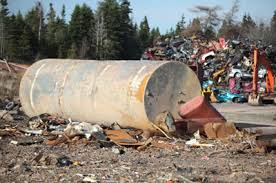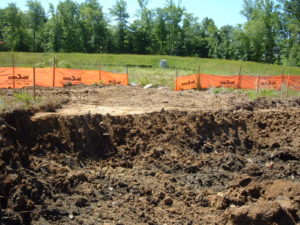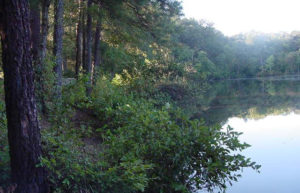
Phase I and II Real Estate Site Assessments
 We perform Phase I and Phase II Environmental Site Assessments to permit a user to satisfy one of the requirements to qualify for the innocent landowner defense to CERCLA liability. We use experienced environmental professionals to conduct these studies. The Phase I ESA consists of reviews of several historical and current data sources as well as a visit to the site to evaluate the possibility that the subject property is at risk to have been contaminated by hazardous materials to include petroleum products. The phase II ESA is an extension of the Phase I ESA in that the Phase II ESA includes the actual sampling and testing for soil, and groundwater contamination. The Phase I and II ESAs, in addition to the “innocent land owner defense” provide indications of or confirmation of the presence of contamination on a site and our recommendations as to further action.
We perform Phase I and Phase II Environmental Site Assessments to permit a user to satisfy one of the requirements to qualify for the innocent landowner defense to CERCLA liability. We use experienced environmental professionals to conduct these studies. The Phase I ESA consists of reviews of several historical and current data sources as well as a visit to the site to evaluate the possibility that the subject property is at risk to have been contaminated by hazardous materials to include petroleum products. The phase II ESA is an extension of the Phase I ESA in that the Phase II ESA includes the actual sampling and testing for soil, and groundwater contamination. The Phase I and II ESAs, in addition to the “innocent land owner defense” provide indications of or confirmation of the presence of contamination on a site and our recommendations as to further action.
Phase III Assessment and Site Remediation
 The Phase III Environmental Site Assessment is used to assess the extent of site contamination and to propose the scope necessary to remediate the site. Groundwater wells are used to determine the extent and direction of flow of a contamination flume and to determine the risk to the public and best method of treatment. Remediation can take several forms depending on the impact and assessment of risk. Where the risk is low a case can be made for leaving contaminants in place or isolating the boundaries and forming a cap. Where extraction is required there needs to be an evaluation of the effectiveness of remediation activities. The exact scope of the report will depend on local conditions and the nature of the contamination and the remediation methodology.
The Phase III Environmental Site Assessment is used to assess the extent of site contamination and to propose the scope necessary to remediate the site. Groundwater wells are used to determine the extent and direction of flow of a contamination flume and to determine the risk to the public and best method of treatment. Remediation can take several forms depending on the impact and assessment of risk. Where the risk is low a case can be made for leaving contaminants in place or isolating the boundaries and forming a cap. Where extraction is required there needs to be an evaluation of the effectiveness of remediation activities. The exact scope of the report will depend on local conditions and the nature of the contamination and the remediation methodology.
Land Disturbance Monitoring
 All new construction projects have a requirement for a Certified Land Disturber (CLD) that will monitor the earth moving activities. This individual must be certified by the State of Virginia or be a licensed professional engineer. For projects where the contractor does not have his own CLD, we will have qualified individuals or engineers to periodically inspect the site as required by governing agencies. This inspection includes inspection of all phases of the plan of development to determine that all work is in compliance with the approved plans. When there is non-compliance, the contractor is given a reasonable amount of time to correct the condition so that construction can continue without delay.
All new construction projects have a requirement for a Certified Land Disturber (CLD) that will monitor the earth moving activities. This individual must be certified by the State of Virginia or be a licensed professional engineer. For projects where the contractor does not have his own CLD, we will have qualified individuals or engineers to periodically inspect the site as required by governing agencies. This inspection includes inspection of all phases of the plan of development to determine that all work is in compliance with the approved plans. When there is non-compliance, the contractor is given a reasonable amount of time to correct the condition so that construction can continue without delay.
Water Quality Monitoring
 Land disturbance along waterways may require monitoring of water quality during grading activities or other activities performed in waterways such as bridge construction. These impacts require collection of water samples upstream and downstream of construction activities to determine if water quality is within acceptable limits established for the project. Some projects also require collection of water samples in temporary containment basins and outfall flow features within 24 hours of storm events to check for compliance with turbidity and water quality standards established for the project. We can also collect either groundwater or drinking water samples for testing by a local, qualified chemistry laboratory.
Land disturbance along waterways may require monitoring of water quality during grading activities or other activities performed in waterways such as bridge construction. These impacts require collection of water samples upstream and downstream of construction activities to determine if water quality is within acceptable limits established for the project. Some projects also require collection of water samples in temporary containment basins and outfall flow features within 24 hours of storm events to check for compliance with turbidity and water quality standards established for the project. We can also collect either groundwater or drinking water samples for testing by a local, qualified chemistry laboratory.
